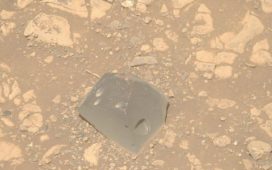Pray for good weather this Saturday, as another nighttime spectacle is set to hit UK skies – as October’s Hunter’s full moon will coincide with a partial lunar eclipse.
And unlike a solar eclipse, you can stare at this one with the naked eye as much as you like.
Lunar eclipses occur when the Earth passes between the Sun and the Moon, casting a shadow on our cosmic neighbour.
Like solar eclipses, there are different types.
During a total lunar eclipse, the Sun, Earth and Moon are in perfect alignment. The Moon is completely caught in Earth’s full ‘umbral’ shadow and turns a deep dark red – earning it the nickname blood moon.
This happens because it is only faintly illuminated by light that has been bent backwards as it passes through our atmosphere due to the process known as refraction – think of when you put a straw in a drink and it appears to bend.
A penumbral lunar eclipse occurs when the trio are not quite perfectly lined up. Instead, the Moon passes through the outer part of the Earth’s shadow, known as the penumbra. The surface of the Moon does not appear as dark or as red as during a total eclipse.
Saturday’s display will be a partial lunar eclipse, meaning only part of the Moon dips into Earth’s umbral shadow.
Because of this, a partial lunar eclipse doesn’t last as long as a full eclipse – so timing is everything.
Full moon October 2023 explained – what is the Hunter’s moon?
This month’s full moon is known as the Hunter’s moon.
According to the Royal Greenwich Observatory: ‘After the Harvest moon [in September] comes the Hunter’s moon, in the preferred month to hunt summer-fattened deer and fox unable to hide in bare fields.
‘Like the harvest moon, the hunter’s moon is also particularly bright and long in the sky, giving hunters the opportunity to stalk prey at night.
‘Other names include the travel moon and the dying grass moon.’
How to watch the Hunter’s moon partial lunar eclipse
If you want to see the partial lunar eclipse yourself, you’ll need to get ready to watch at a specific time on Saturday, October 27, from 8.35pm to 9.15pm.
Dr Minjae Kim, a research fellow in the department of physics at University of Warwick, explains: ‘During the partial lunar eclipse, the moment when the Moon begins its passage into Earth’s umbral shadow will start at 20:35:25 BST.
‘This phase, particularly notable for viewing, will last for an hour and 17 minutes.
‘The climax of this occurrence, termed the ‘maximum eclipse’ or ‘greatest eclipse’, is projected for 21:14:05 BST.’
Luckily for skygazers, no equipment is needed to watch a lunar eclipse, but it will look even more impressive with binoculars or a telescope.
However, with just 12% of the Moon covered by the Earth’s deepest – or umbral – shadow at its maximum, Dr Kim warns ‘meticulous timing is paramount for those keen on capturing the event’.
So too is good weather, but don’t panic if cloud hits on Saturday – as there are a number of livestreams showing the event.
For those inspired by the ‘mini’ eclipse this weekend, there will be a penumbral lunar eclipse on March 25, 2024, with another partial lunar eclipse happening in September 2024.
The most recent total lunar eclipse in the UK took place on May 16, 2023, and lasted for five hours.
Patience will be required to watch the next one, set to take place on September 7, 2025.
MORE : Astronomers hate the Moon and want to destroy it
MORE : Greatest mystery of the Moon finally solved by ancient crystals
MORE : This Full Moon in Aries could change the remainder of 2023 for you – find out how
Follow Metro across our social channels, on Facebook, Twitter and Instagram
Share your views in the comments below
Get your need-to-know
latest news, feel-good stories, analysis and more
This site is protected by reCAPTCHA and the Google Privacy Policy and Terms of Service apply.














